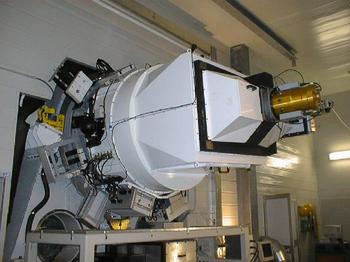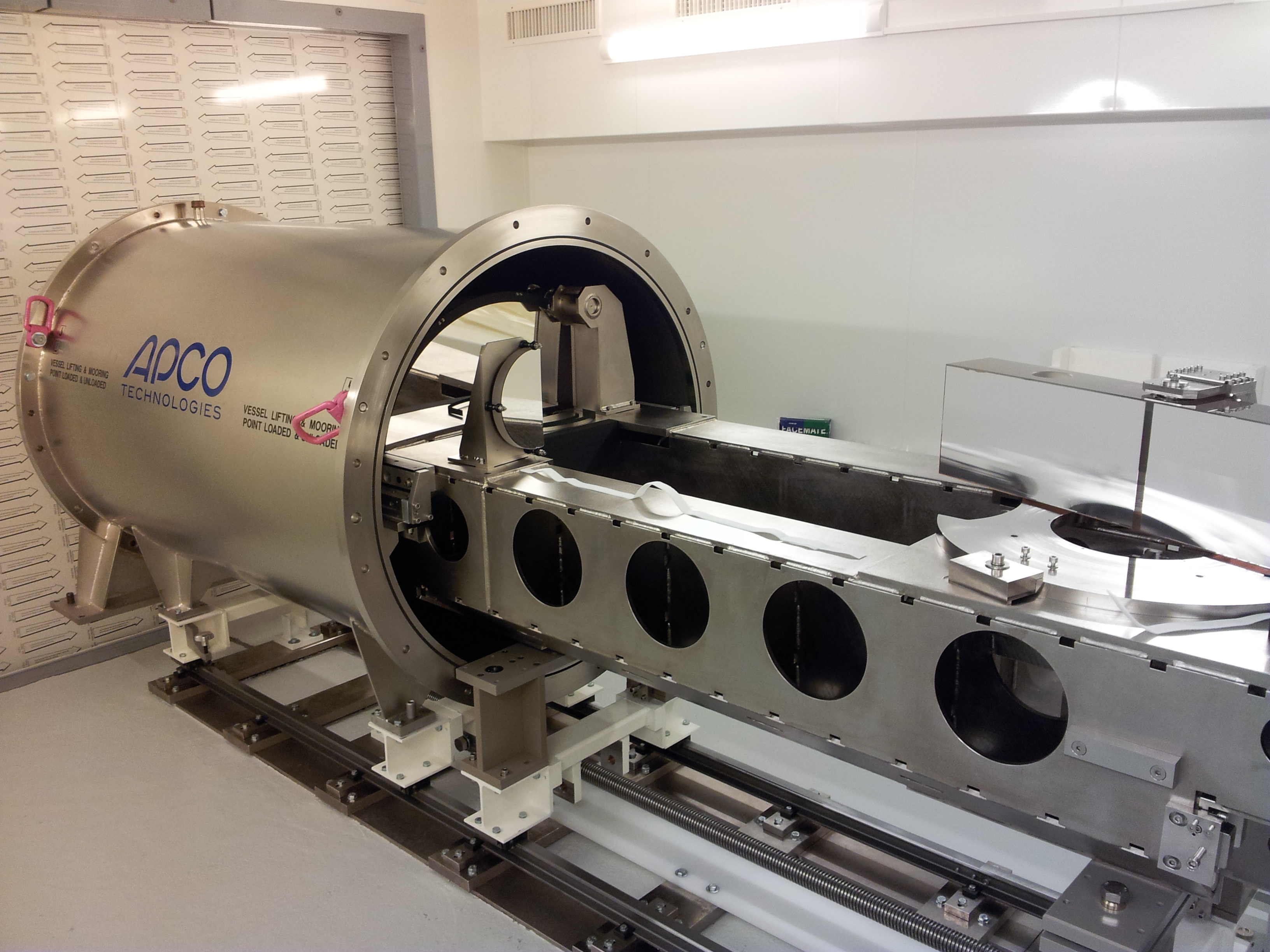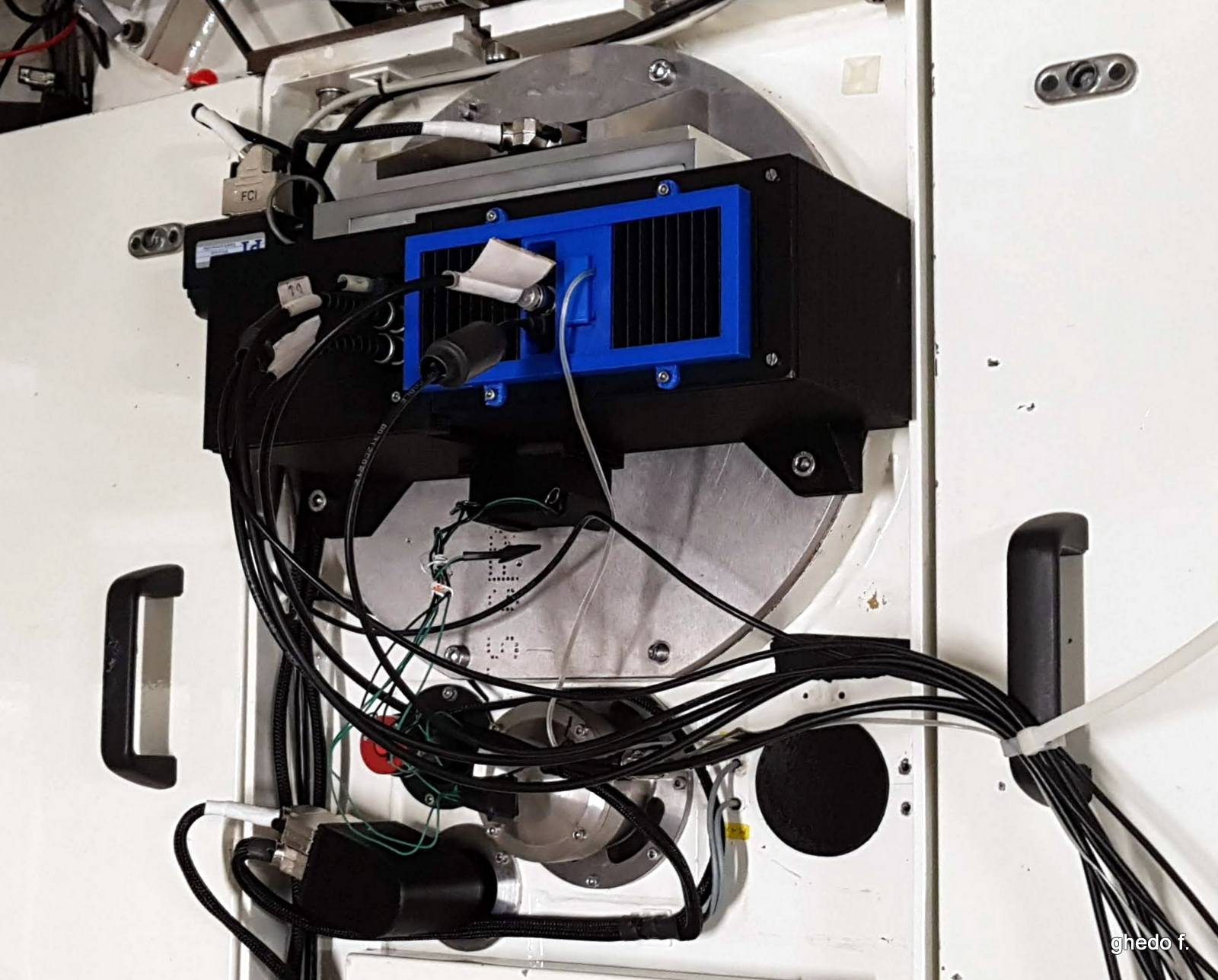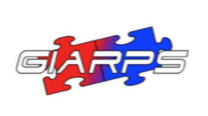AOT 48 Call for Proposals. DEADLINE SUBMISSION EXTENSION TO Monday June 5th, 12:00 UT
 CALL FOR PROPOSALS TNG and REM
CALL FOR PROPOSALS TNG and REM
also featuring LARGE PROGRAMS
AOT48 (2023B): DEADLINE SUBMISSION EXTENSION TO Monday June 5th, 12:00 UT
AOT48 (2023B) is now open for proposals.
Applications for observing time for the period
October 1st, 2023 - March 31st, 2024
are solicited and should be submitted by
Friday, June 2nd, 2023, 12:00 UT.
The available time offered in this call at TNG via INAF-TAC is 104 nights, 75 of which are reserved
to exo-planetary research programs (see special notices below) and
29 are for other science programs. We encourage
applicants to
submit proposals asking a row of consecutive nights to be done in visitor mode. The budget can
increase if not all the nights offered in other calls will be effectively allocated by the respective TACs. The
foreseen schedule breakdown is reported at the bottom. All proposals will be judged strictly on their scientific
merit.
LARGE PROGRAMS can be requested answering the AOT48 call (see special notices below), both for
exo-planetary and other science.
LONG-TERM PROGRAMS can not be requested answering the AOT48 call.
We will be accepting (few) Director's Discretionary Time proposals during the whole semester (https://www.tng.iac.es/observing/director_time_policy.html),
which will be judged by the TNG staff in a few days. These observations will be performed in
Service Mode only.
New application forms and detailed instructions can be downloaded from
the TNG web pages (https://www.tng.iac.es/submit.html).
Following new ideas on the refereeing process, the PIs (ex
officio) and CoIs (from 2 to 5) could be used as external
reviewers for the other proposals in this or next call. PIs should
explicitly inform their CO-Is that they will have to accept the review of other proposals. (Box 16).
Incomplete computation of the overheads, poor target visibility in the semester and, in particular,
dense
monitoring
are recurrent weaknesses pointed out when assessing the technical feasibility. Too dense cadence (like,
e.g., 1 visit per week or less) will be considered not feasible
due to scheduling issues.
Queueing mode is not available. Filler programs cannot be implemented.
Important information for a more careful preparation of the proposals are reported at https://tngweb.tng.iac.es/call/info.html
The present list of Protected Targets will be effective up to the end of AOT 47.
New Protected Targets accepted by TAC will form a new list.
(https://www.tng.iac.es/observing/protected.html)
TNG is a 3.58-m optical/infrared telescope located at Roque de Los Muchachos Observatory in
the island of La Palma (Canary Islands). Its primary mirror is corrected by Active Optics and
it is equipped with instruments for imaging and spectroscopy, spanning the optical and near
infrared wavelengths range.
The offered instruments are: HARPS-N, NICS, DOLORES and GIANO-B (GIANO in Nasmyth B).
SiFAP2 is also offered as a visitor instrument (see below).
The observing mode GIARPS, simultaneously combining HARPS-N and GIANO-B,
is also offered (see below).
For further details, visit https://www.tng.iac.es
REM is a 60-cm robotic telescope located at La Silla ESO site (Chile) which can observe
simultaneously with a visible and an infrared camera. The observations will be carried out
in unmanned, queuing mode. INAF-TAC will allocate up to 1000 hours of observations.
REM is equipped with ROS2 visible camera and REMIR infrared camera.
The two are observing simultaneously thanks to a dichroic.
ROS2 will produce simultaneous images in the four Sloan-like passbands g, r, i, z.
Charged time is therefore not the sum of ROS2 and REMIR, but the greater between the two.
For details, see http://www.rem.inaf.it
NOTICES FOR AOT 48

LARGE PROGRAMS at TNG
In the era of mature 8m-class telescopes, and
with 40m-class telescopes approaching the event horizon, it is
mandatory to define compelling scientific programs that
justify the investments that the Italian astronomical
community is making to maintain TNG operative and
competitive. TNG is offering competitive instrumentation,
especially in the case of HARPS-N and GIANO-B, which can be
jointly used in the GIARPS instrumental combination.
Therefore, TNG opens observing time to major, large
scientific programs, extending over several semesters
and/or exploiting a significant fraction of the
INAF-TAC nights.
Characteristics of the "Large" programs
These "Large" programs must be able to address major open
problems in modern astrophysics, and to characterize and define the
TNG scientific mission in the next years. The basic features of these
"Large" programs are:
- All topics in modern astronomy are eligible for
evaluation. Due to the scheduling process used at TNG, projects requiring targets of
opportunity are not eligible as Large Programs.
- Programs can use any of the instruments permanently
installed and commissioned on the TNG: DOLORES, NICS, HARPS-N,
GIANO-B, also in the so-called GIARPS mode.
- Large Programs not accepted by the TAC as such can be downgraded to normal proposals
covering a single semester, with a possible reduction of the observing time.
- Large Programs may extend up to 5 years (10 semesters) and, as a bare indication, should
require at least 8 nights/semester and a minimum of 30 nights of total time for execution.
The number of allocated Large Programs will be decided by the TAC taking into account the
need to leave an adequate number of nights for normal programs in each semester.
- The Principal Investigator (PI) and at least 50% of the
participants must be affiliated to Italian Institutions.
See Nationality Restriction Notice below for exoplanetary programs.
- Proposals should include a dedicated plan for observations,
data processing and scientific exploitation, previous
achievements with TNG or other major telescopes, and a clear
commitment from the members of the proposing team to provide
the required human resources for the program execution.
- The data reduction/exploitation plan will be part of the
proposals and will be a matter of evaluation. Public release of
the science grade data (through the IA2 archive) is highly
supported and encouraged.
- Once approved, the successful programs will be granted
telescope time for the whole project, pending regular reviews
of their progress and results.
Change of CCD detector on LRS
The CCD detector of LRS suffered a major failure in february 2023 and is now being repaired. At
the moment of publishing the AOT48 call it is not possible to know if the CCD will be the same
(repaired) or a different one (new). Calibration and characterization of the replaced CCD will
anyway have to be performed. It should be taken into account that the efficiency will probably
change and the results given by the Exposure Time Calculator could be different from the real
ones.
Exo-Planetary Research Programs
The renewed agreement between INAF and HARPS-N Collaboration allows and promotes the use of
HARPS-N at the TNG for the next 5 years. A minimum of 75 nights per semester will be dedicated
to exo-planetary programs from Italian PIs or non-Italian but affiliated to the HARPS-N
Collaboration. 10 of these nights are reserved to young researchers, less than 5 years old from
the discussion of their PhD thesis. Programs related to exo-planetary research will be reviewed
by a dedicated TAC sub-panel and judged only for their scientific merit.
The agreement between INAF and the HARPS-N Collaboration specifies that the available nights per
semester will be roughly equally distributed between the parties and that joint PI-ships between
the parties are welcomed and encouraged.
SiFAP2 offered as a visitor instrument at TNG
The high-temporal resolution photometer SiFAP2 is available as a visitor instrument at the TNG.
It is not a common-user instrument, but it will be supported for a maximum of 54 hours. Before
submitting the
proposal, the proponent team must contact the SiFAP2 PI Alessandro Papitto
(alessandro.papitto@inaf.it)
for a technical validation. Publications based on SiFAP2 data must include builders as
co-authors.
For more information about SiFAP2 and the available observing modes (photometry and linear
polarimetry)
see
https://www.tng.iac.es/instruments/sifap2/.
The observational mode GIARPS at TNG
The light from the telescope is split into visible and infrared domains by means of a
dichroic.
The former feeds as usual HARPS-N, the latter is
beamed into the new preslit of GIANO-B.
The slit of GIANO-B is directly fed through a new optical
relay instead of the previous fiber fed preslit. For efficiency and
for overheads, please use the old GIANO page and recipe to prepare
your proposals. They will serve as an upper limit.
For those proposals wishing to use the dual GIARPS mode, please tick
both HARPS-N and GIANO-B boxes in the submission form, and state it
clearly in the text. Proponents must also report the respective total HARPS-N
and GIANO-B observing times. The greater value will constitute the effective time request of
the proposal.
For technical reasons, please indicate the preferred instrument.
NATIONALITY RESTRICTIONS APPLY
INAF-TAC is receiving only Italian proposals for TNG, defined as the PI and at least half of
the participants being affiliated to an Italian Institution.
However, proposals belonging to the exo-planetary research programs can be submitted by
Italian PIs or by any PI affiliated to the HARPS-N collaboration.
Non-Italian proposals
should be submitted following the TransNational Access provided by the
OPTICON-Radionet Pilot project.
This is valid for Italian teams requesting the Nordic Optical Telescope, too.
Indeed, we remind that
the Nordic counterpart decided to not continue in the time-sharing agreement between TNG and
NOT.
The Nationality restriction does not apply to REM proposals.
AOT48 TIME BREAKDOWN
For sake of completeness, we report the foreseen TNG-time breakdown
for the AOT48 semester:
- 29 nights for the INAF-TAC (this call)
- 75 nights for the Exo-Planetary science Program
- 7 nights for the ongoing INAF Long-Term Programs
- 31 nights for the Spanish CAT
- 10 nights for the OPTICON-Radionet Pilot project, TransNational Access
- 8 nights for the CCI International Time Program
REM available time is 1000 hours.
Adriano Ghedina
Director
Telescopio Nazionale Galileo
Fundación Galileo Galilei - INAF









